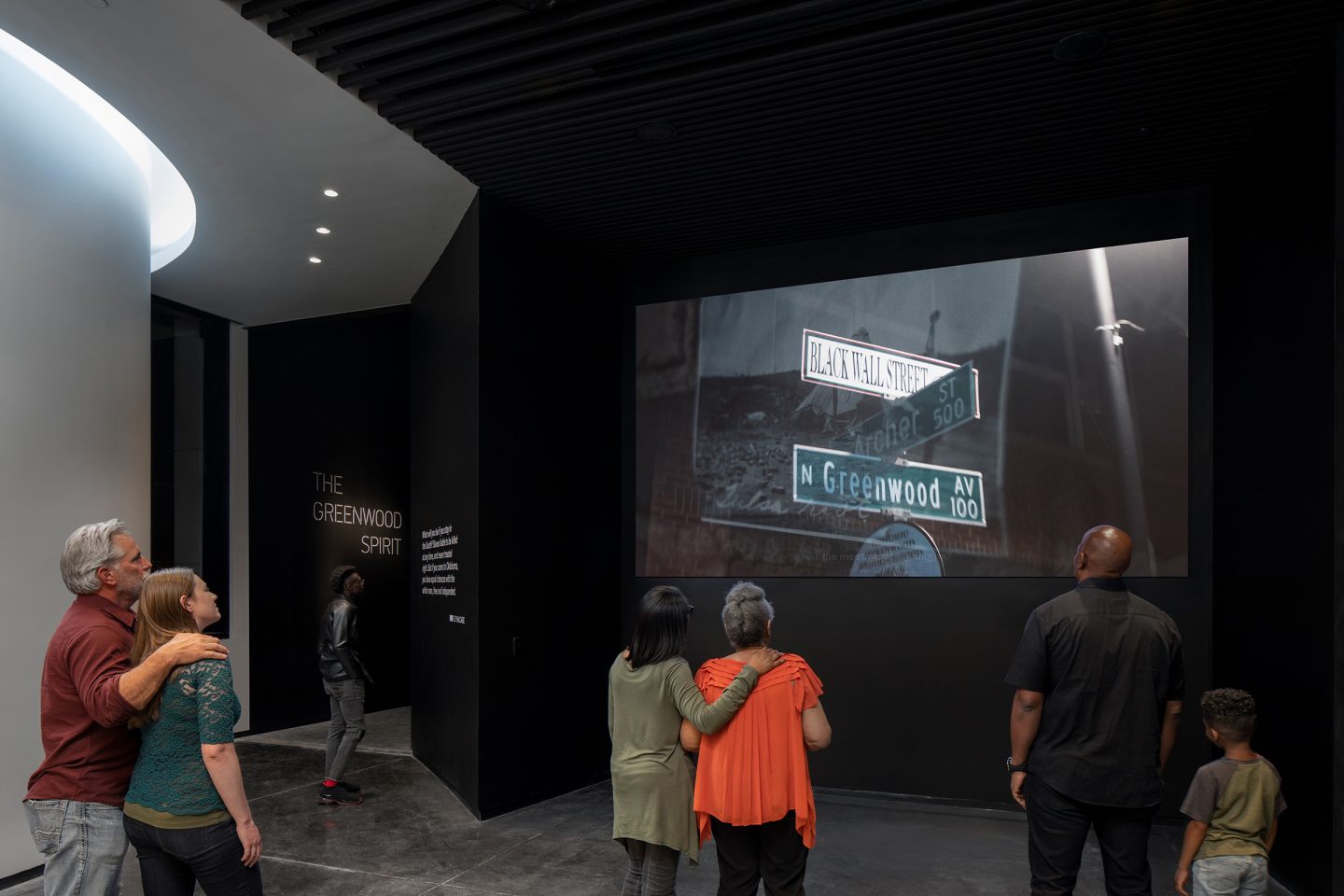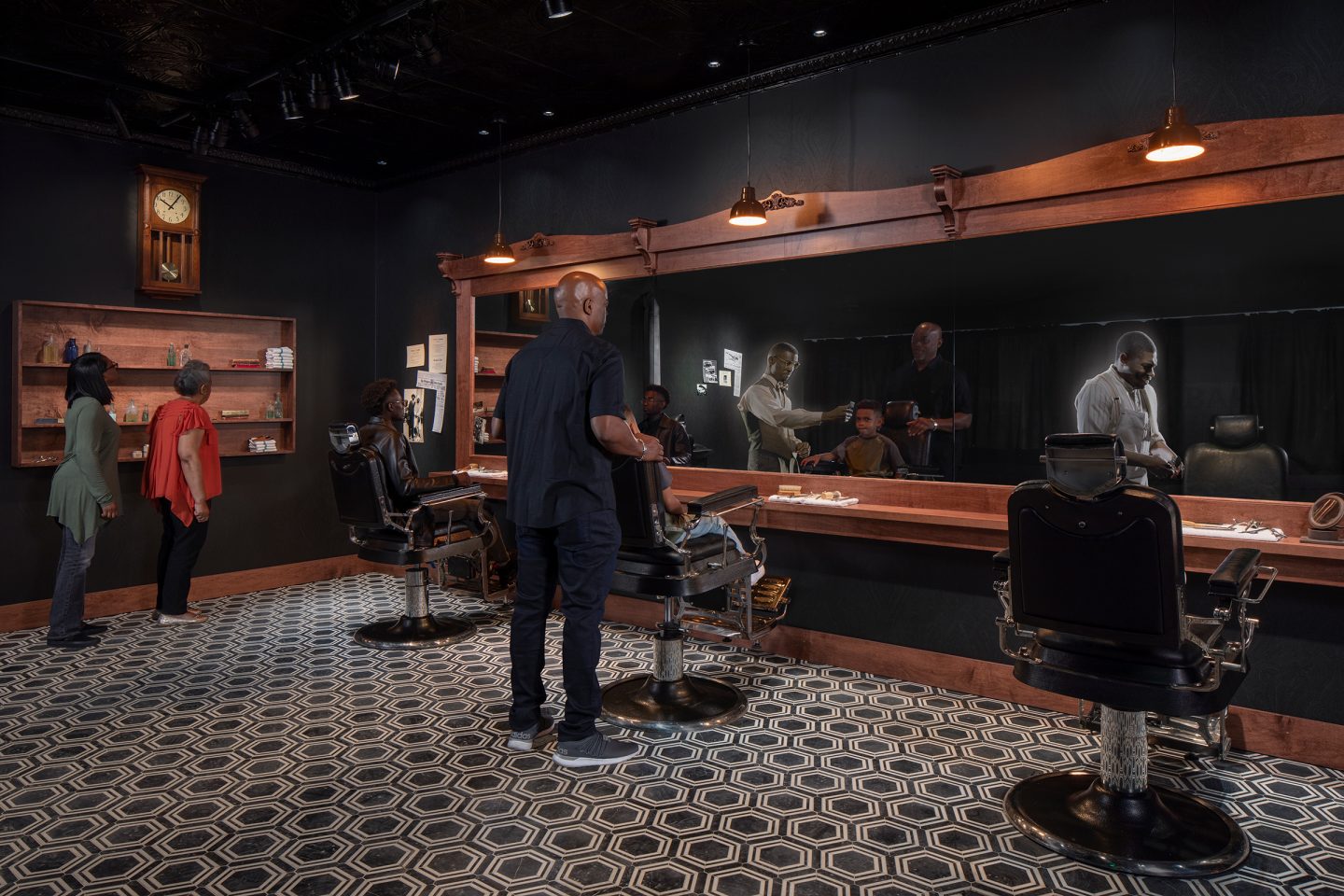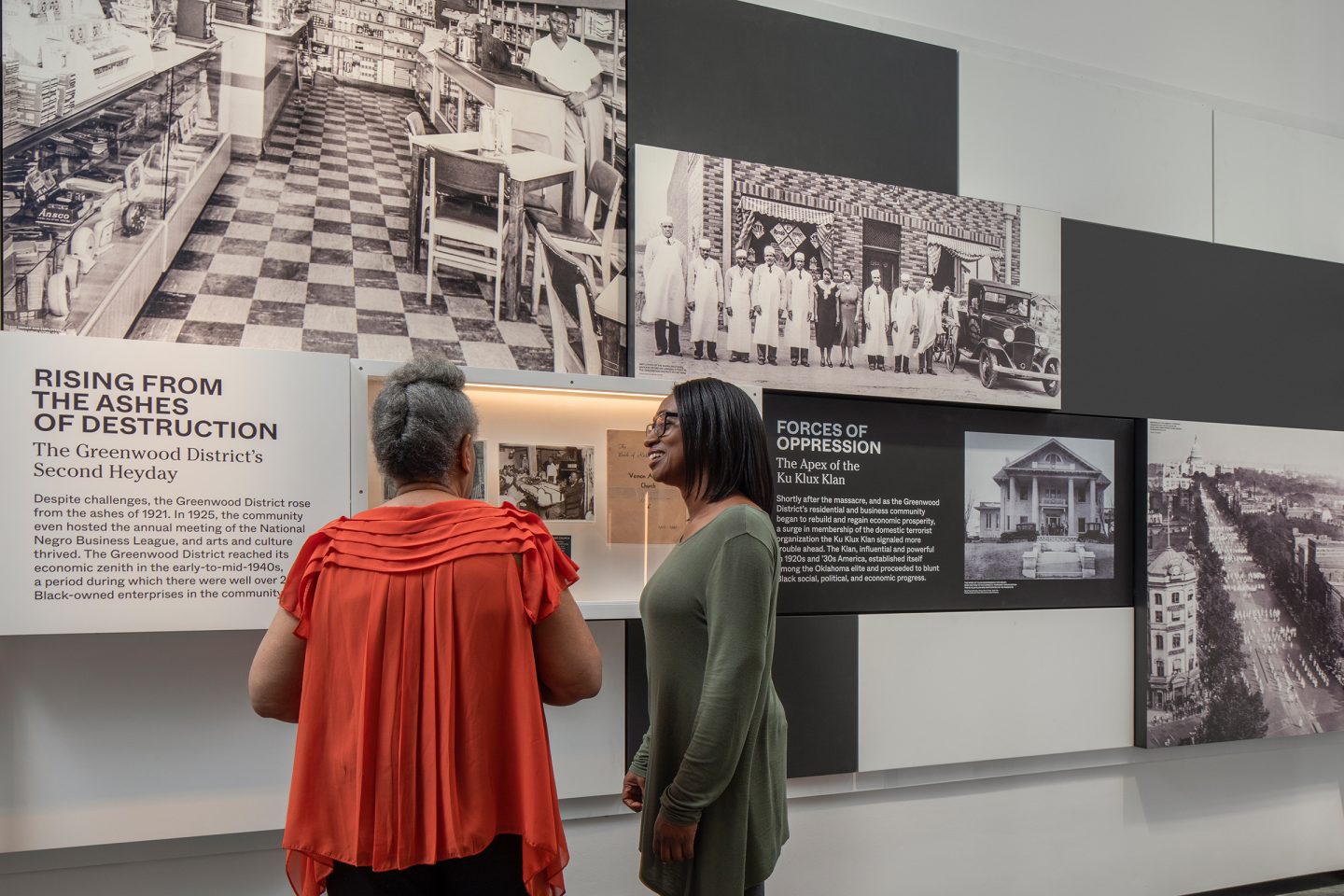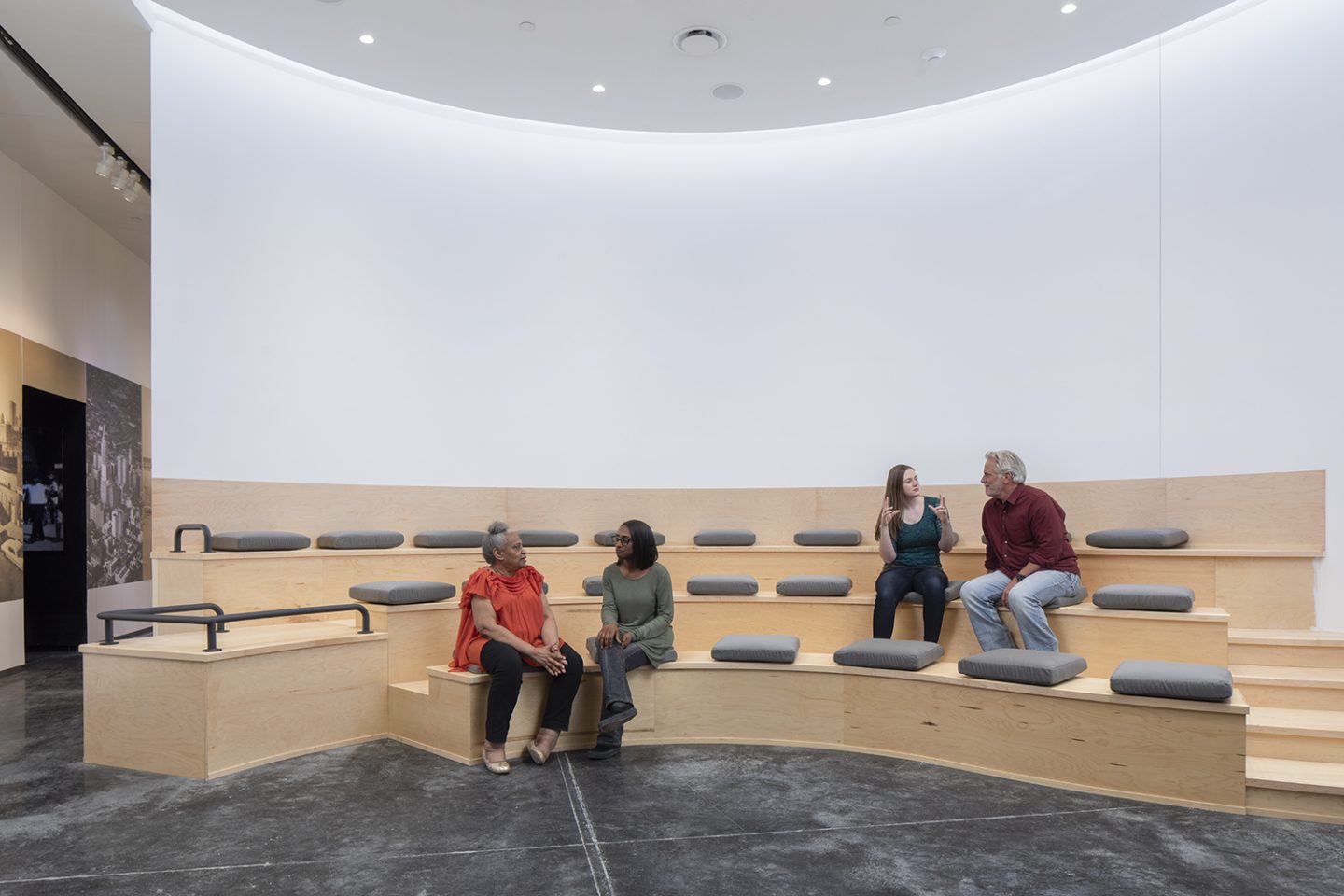Greenwood Rising: Black Wall Street History Center
After a century of silence, the story of the 1921 Tulsa Race Massacre will be shared with the nation.
Overview
In 1921, a group of white residents in Tulsa, Oklahoma destroyed the thriving African American neighborhood of Greenwood, known as Black Wall Street, flattening over 35 blocks and killing over 300 people. The incident known today as the Tulsa Race Massacre was covered up by the state and federal government, and is often not taught in American schools. The 1921 Tulsa Race Massacre Centennial Commission tapped Local Projects to develop an exhibition space that will tell the story not only of the Massacre itself, but also of the remarkable and resilient Greenwood community.
Partners
Selser Schaefer Architects, Goldmill Productions, Loyal Kaspar, 1220 Fabrication
Services
Exhibit Design, Media Design
Museums are valuable to the extent they link the past to the present and illuminate, and appraise, both. In Greenwood Rising the links are made overt and we’re urged to ponder them, to recognize that the white-on-Black violence of 1921 is still with us, and that Black disenfranchisement, like racism, remains entrenched.
The Details

Intro Film
This media piece welcomes visitors to the Greenwood District, a community whose history as a Black business mecca and the site of racial violence is matched by its resilience and strength. Featuring Maya Angelou’s iconic poem Still I Rise, and created by Tulsa-based filmmaker Trey Thaxton, the film features Greenwood community members and business owners, juxtaposing past and present stories of success and hope.
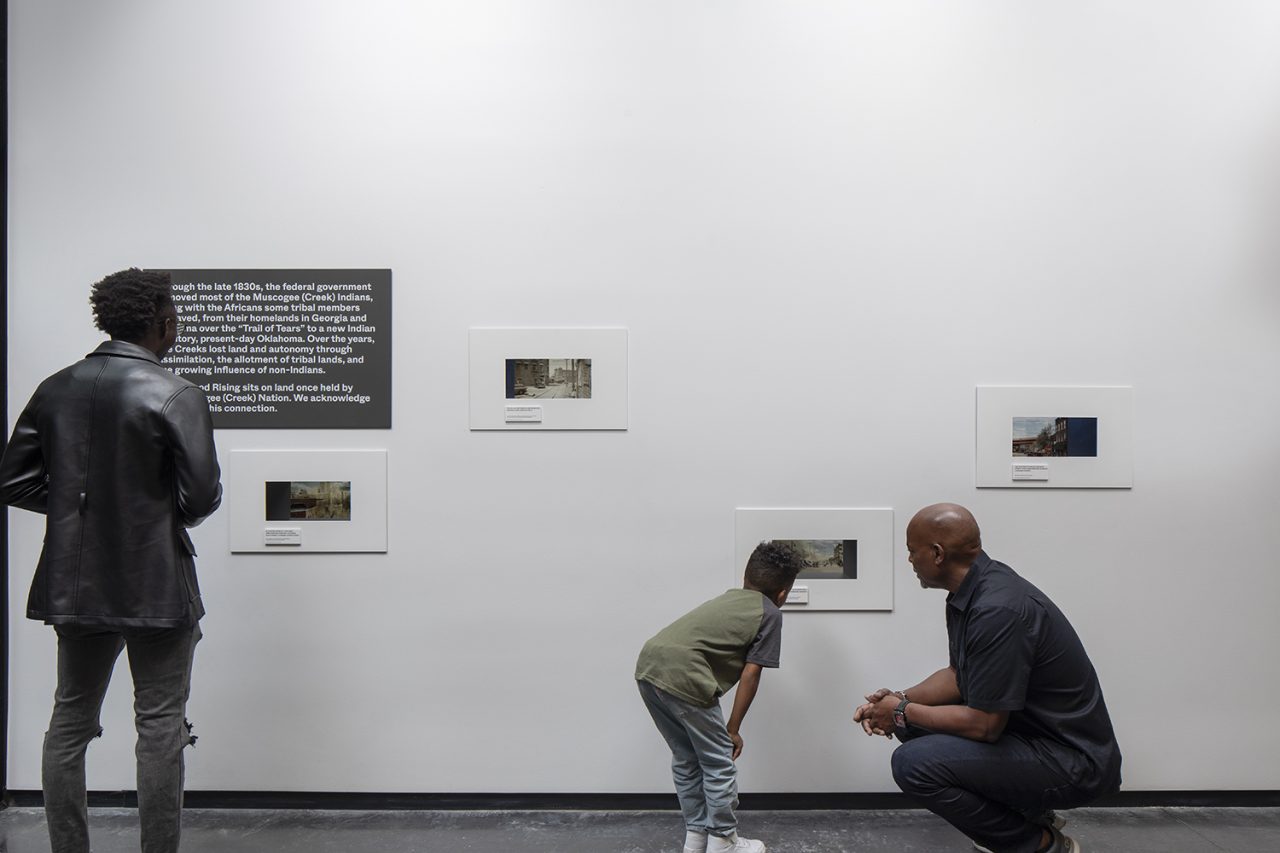
Viewports
Upon entering Greenwood Rising’s lobby, visitors peer through windows into the district’s past that morph into contemporary views of the same place, evoking critical thought about progress in the community.
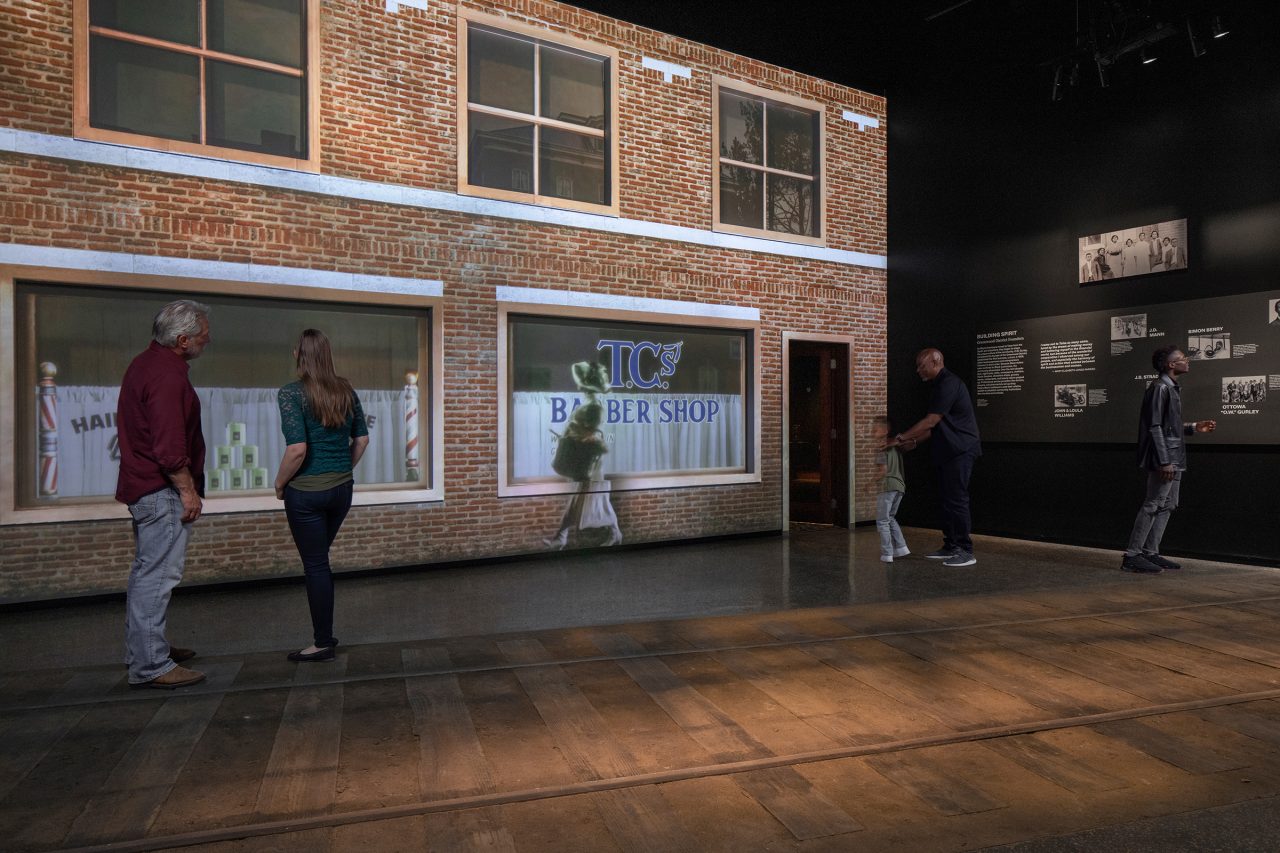
The Greenwood Spirit
This section explores the early placemaking of Greenwood — how and why the African American community came to this place, the struggles they faced, and the ways in which they succeeded in building this vibrant and wealthy community, even in the face of systemic racial oppression.
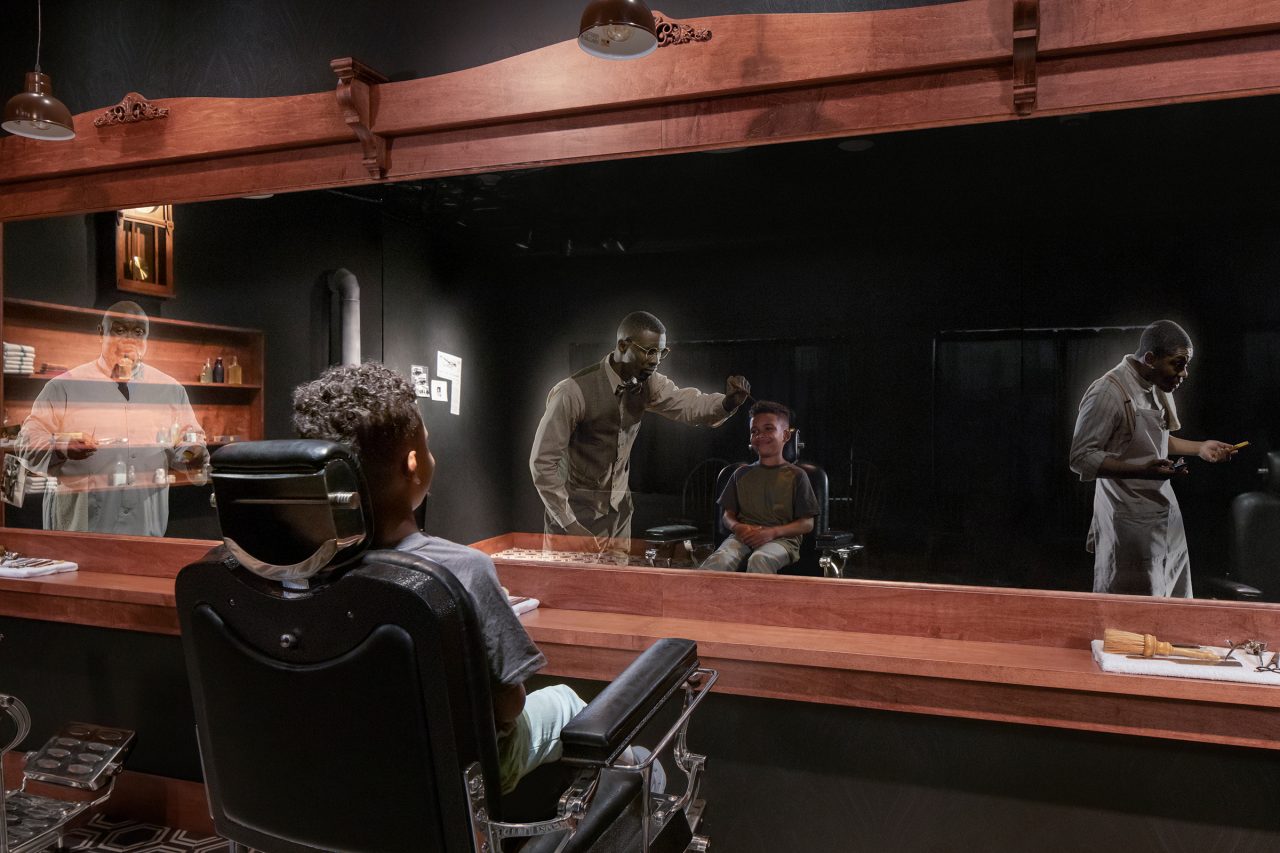
Life in Greenwood (Period Barbershop Recreation)
A period barbershop comes to life with holographic barbers who engage the visitors with the hopes, dreams, and activity of folks in early Greenwood. Barbers relay stories of past customers and their businesses, explaining the history of Greenwood and instilling community values into the visitor as reflected in the oral histories of hard work and success.
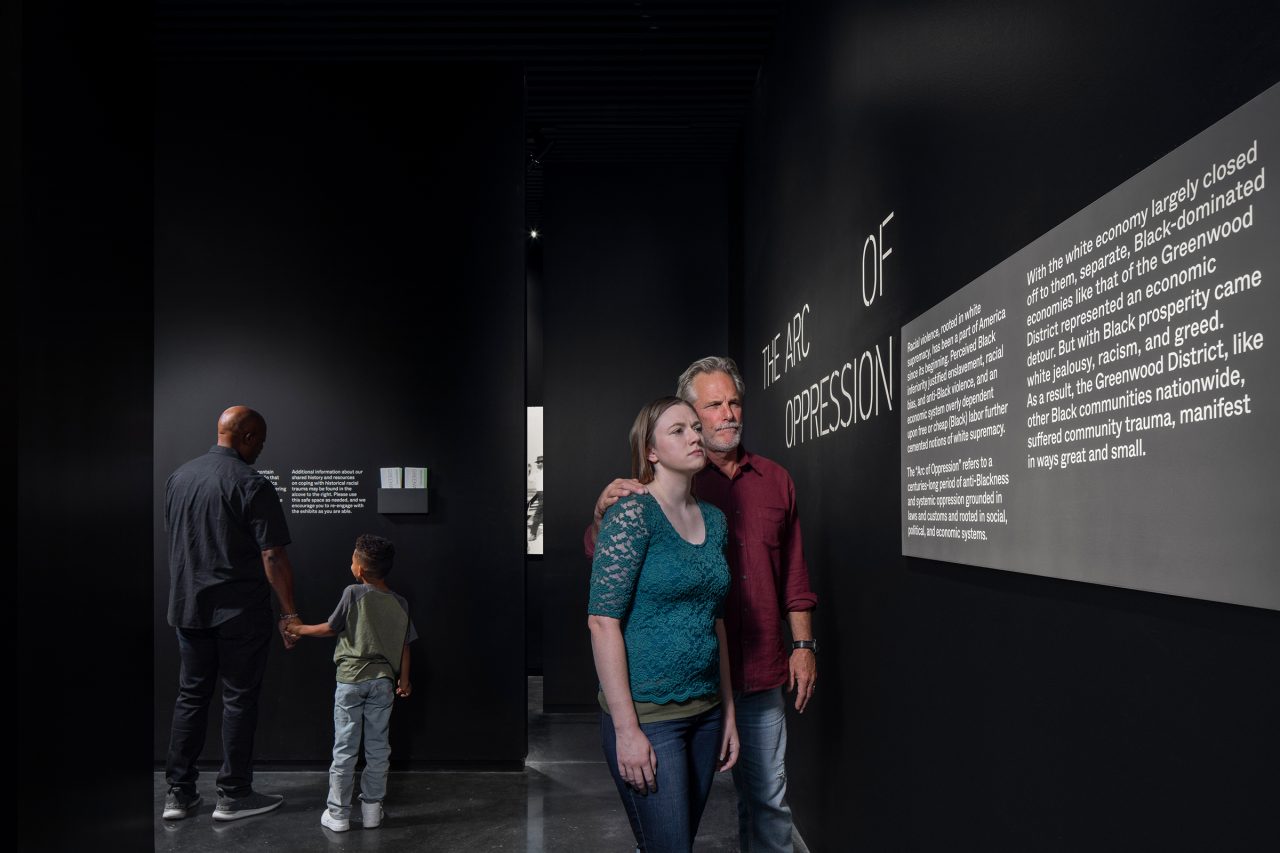
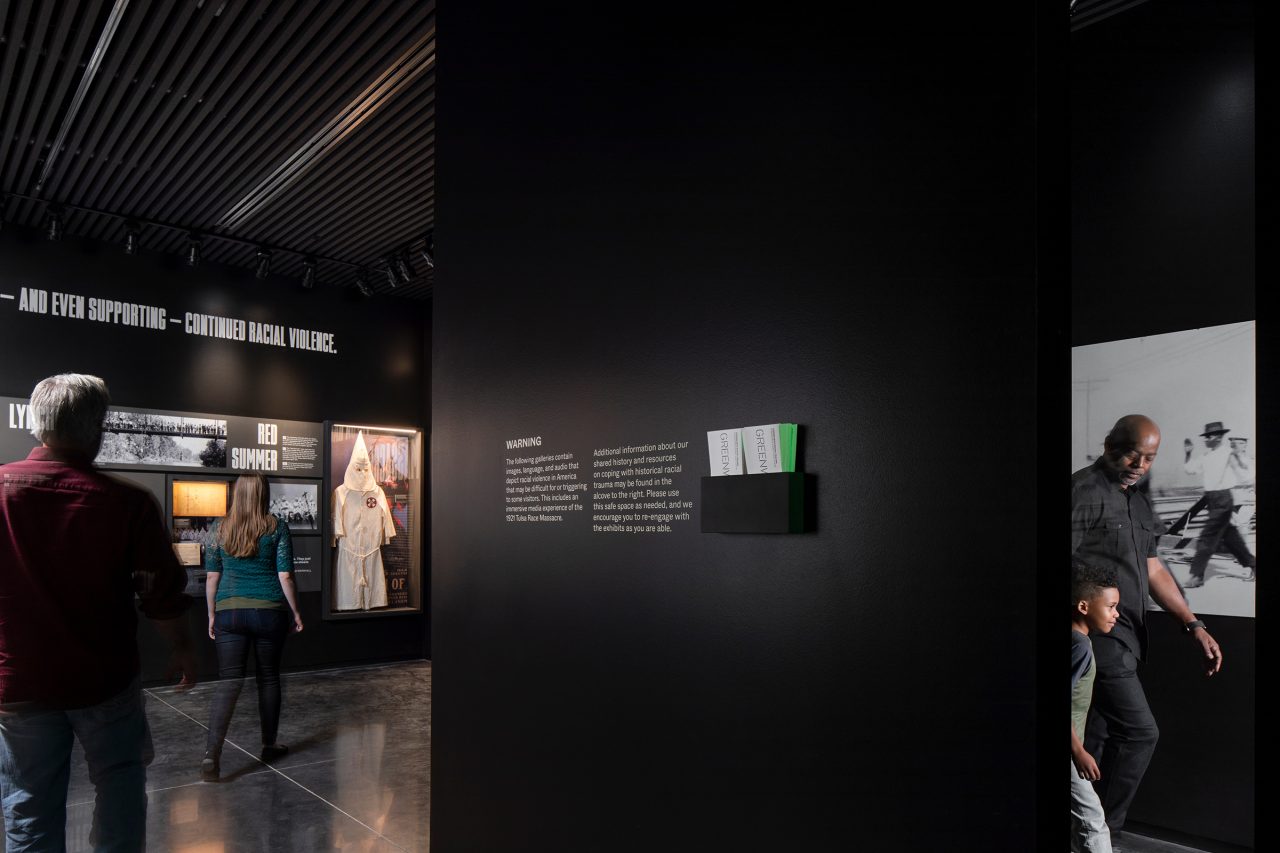
Arc of Oppression + Emotional Exit
The Arc of Oppression section begins with a content warning that supports visitors with information around recognizing triggers and coping with historical racial trauma. Visitors may enter an “emotional exit” corridor that bypasses potentially triggering content while providing key historical information, or progress into the Systems of Anti-Blackness space.
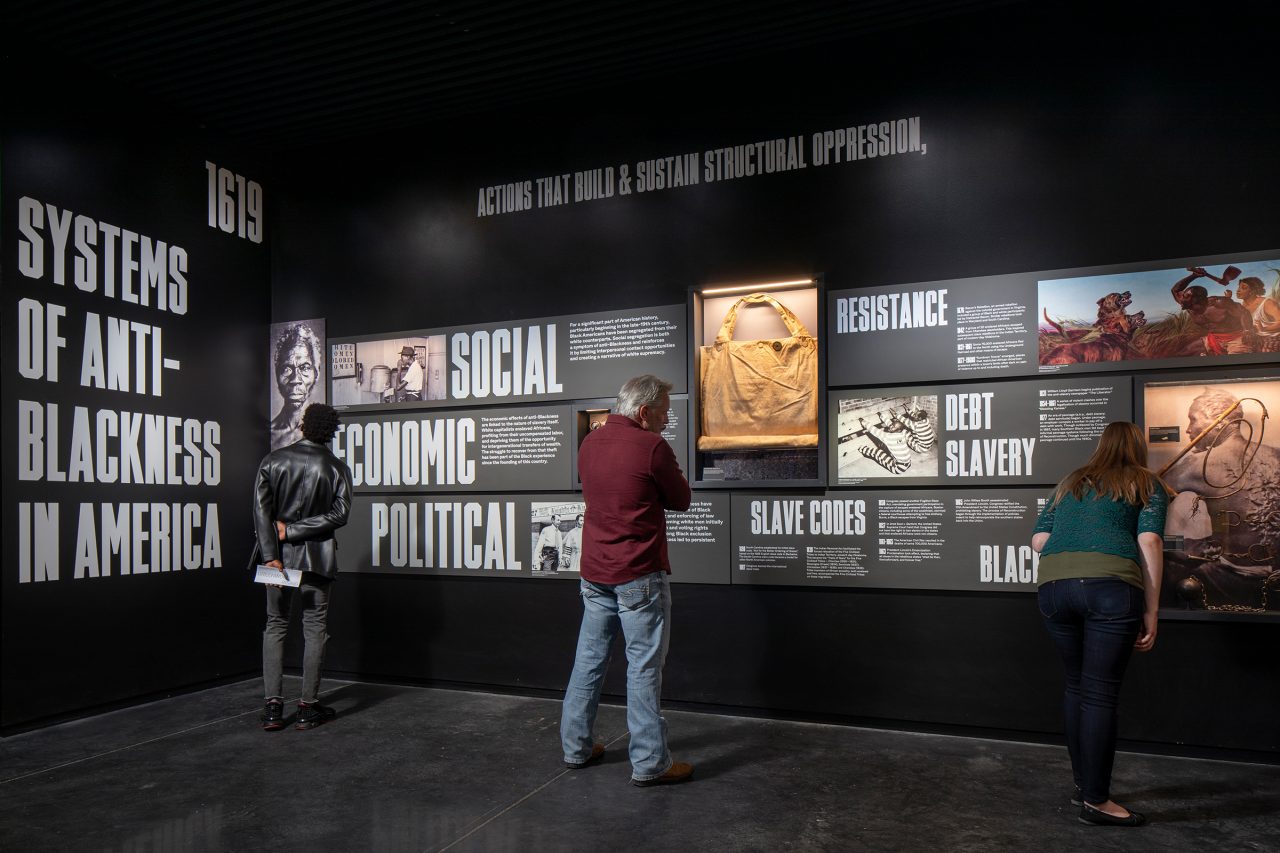
Systems of Anti-Blackness
Visitors enter a timeline of racial violence organized around the social, economic, and political systems of anti-Blackness in America. Key features include artifacts of control and violence like slave shackles and a robe from the domestic terrorist organization, the Ku Klux Klan.
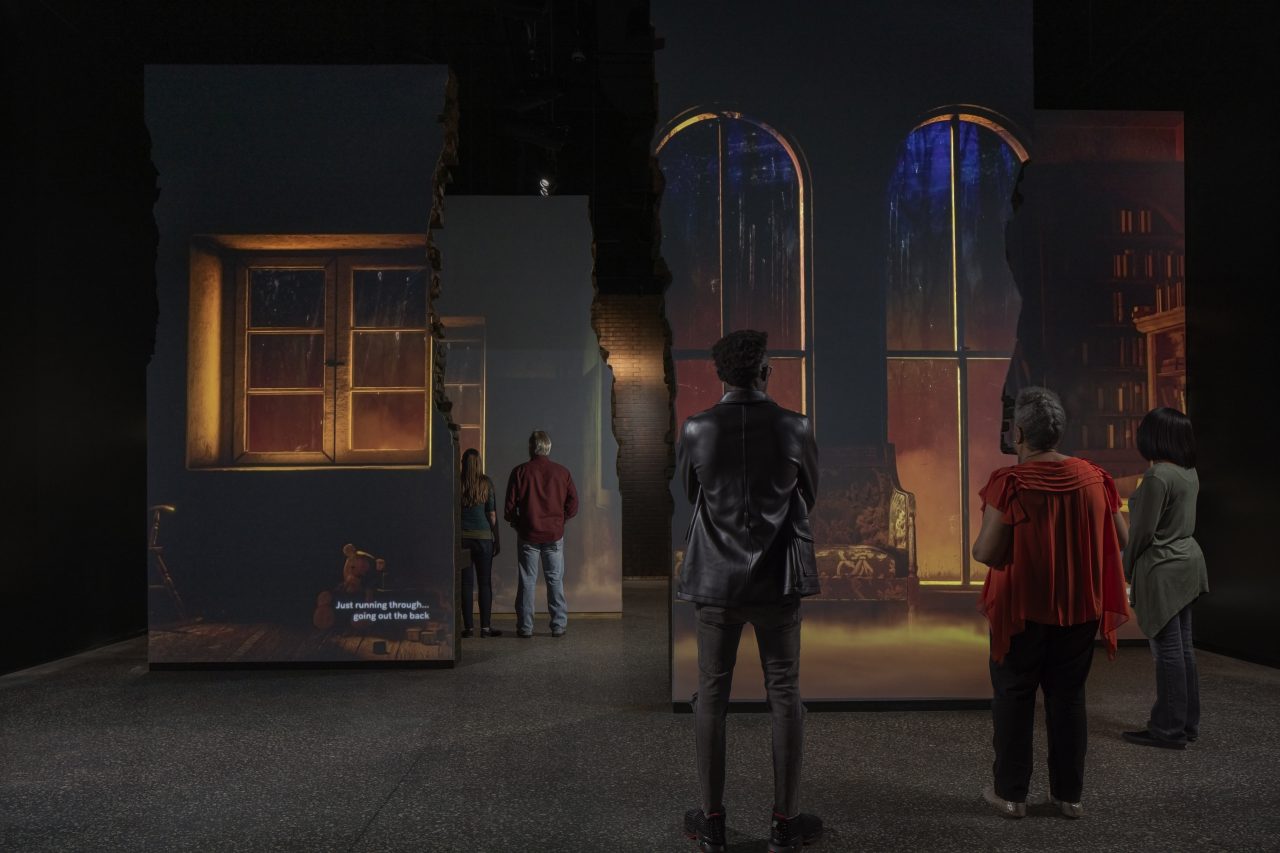
1921 Tulsa Race Massacre
This exhibit brings to life the horrors of the 1921 Tulsa Race Massacre, immersing visitors in the minute-by-minute accounts from survivors and memories from descendants. Told from the perspective of survivors, the humanity and despair frames the photographs of crumbling businesses and burning homes that witnessed the destruction of a thriving African American community. First person accounts taken from interviews with survivors like Eddie Faye Gates weave together the black experience of the Massacre.
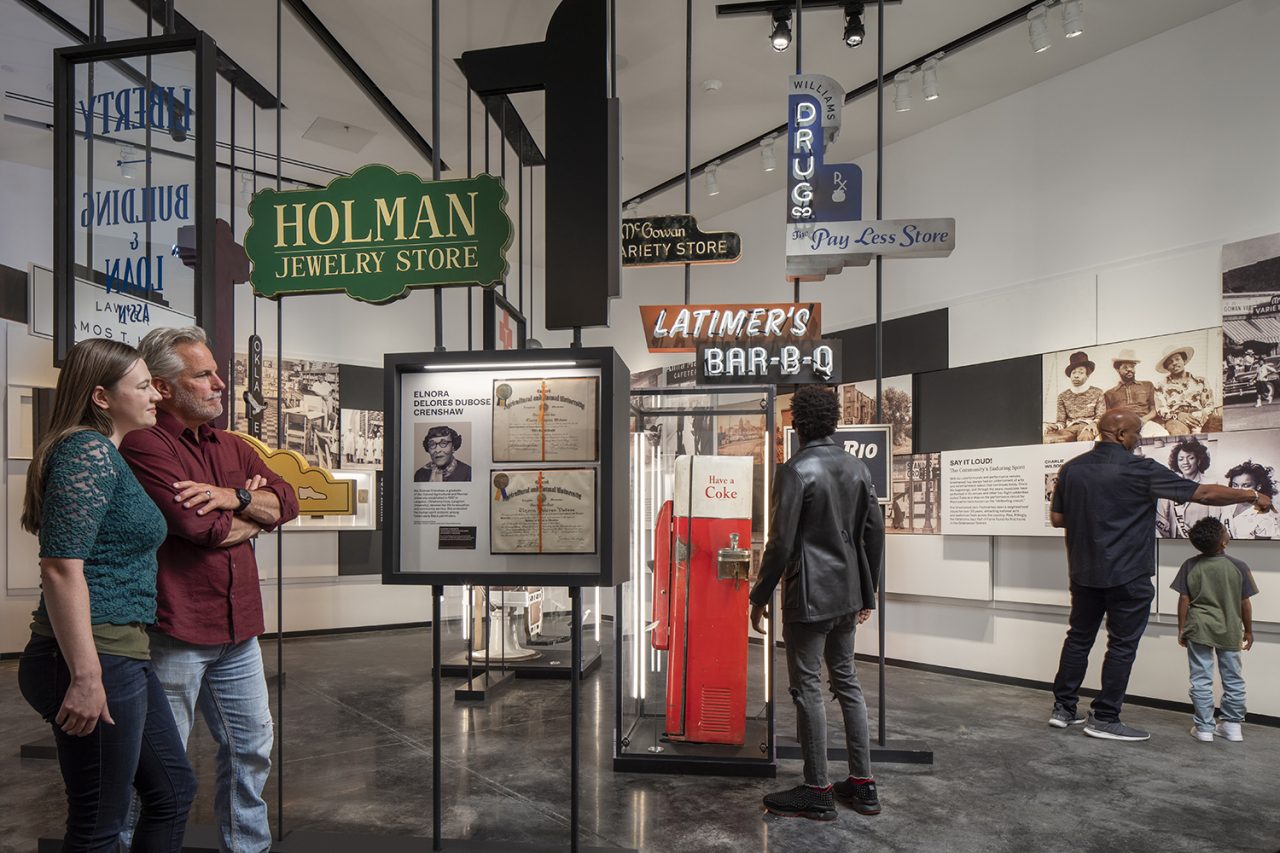
Changing Fortunes
80 years of history are covered in this gallery. A split-screen graphic contrasts a Greenwood District street view during its heyday with photos from after Urban Renewal, framing the theme of the district’s Changing Fortunes. A bold, interpretive installation of Greenwood business signs anchors the exhibit space. The installation profiles key community members while flickering lights and various states of (dis)repair reference the ebbs and flows of economic success following the Massacre. Key moments in Greenwood’s history after the Massacre show how the community succeeded but also struggled to live through its legacy of historical racial trauma. Stories push and pull out from the wall, showing the constant duality of experiences.
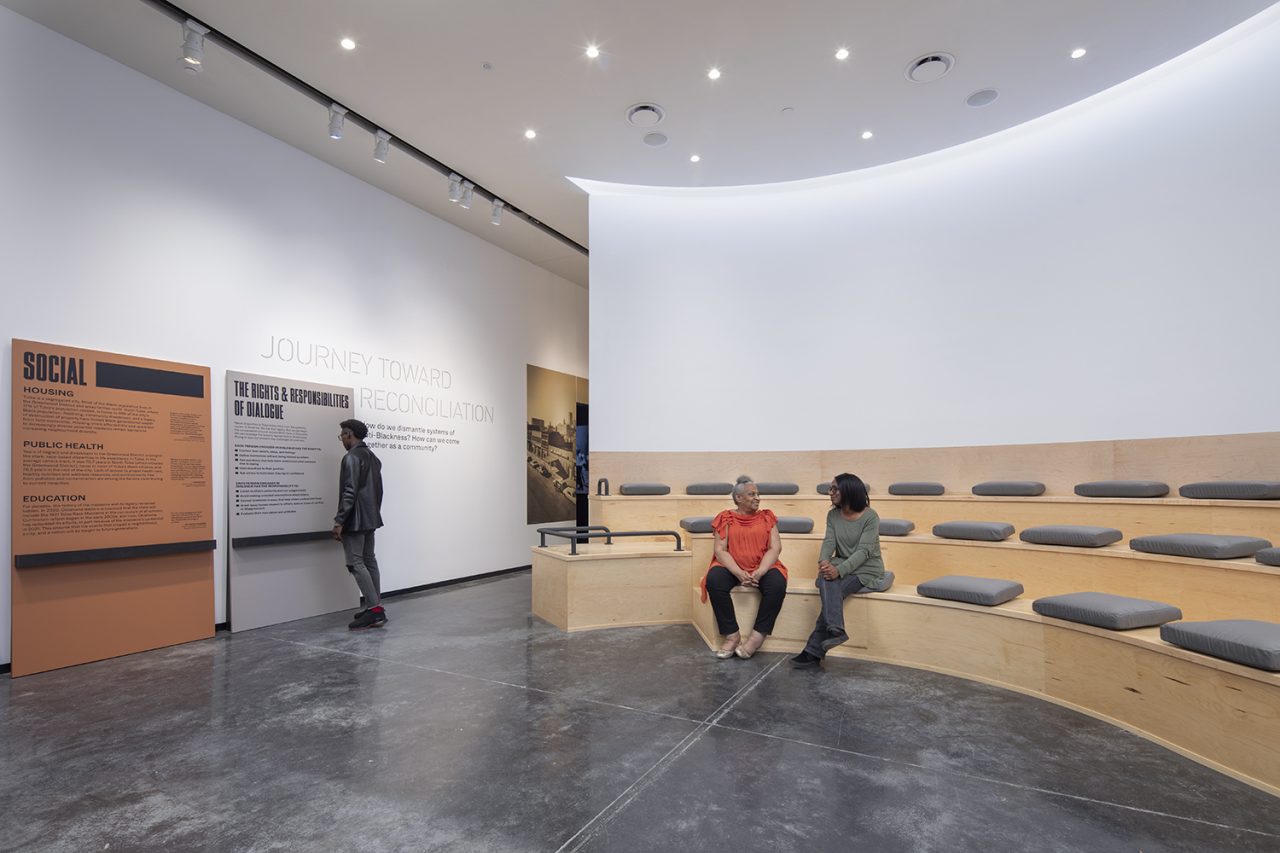
Journey to Reconciliation: Dialogue Space
Greenwood Rising’s final space focuses on restorative justice and contemporary issues of anti-Blackness. Flexible media and graphics inform an environment designed for dialogue and ongoing personal and community work.
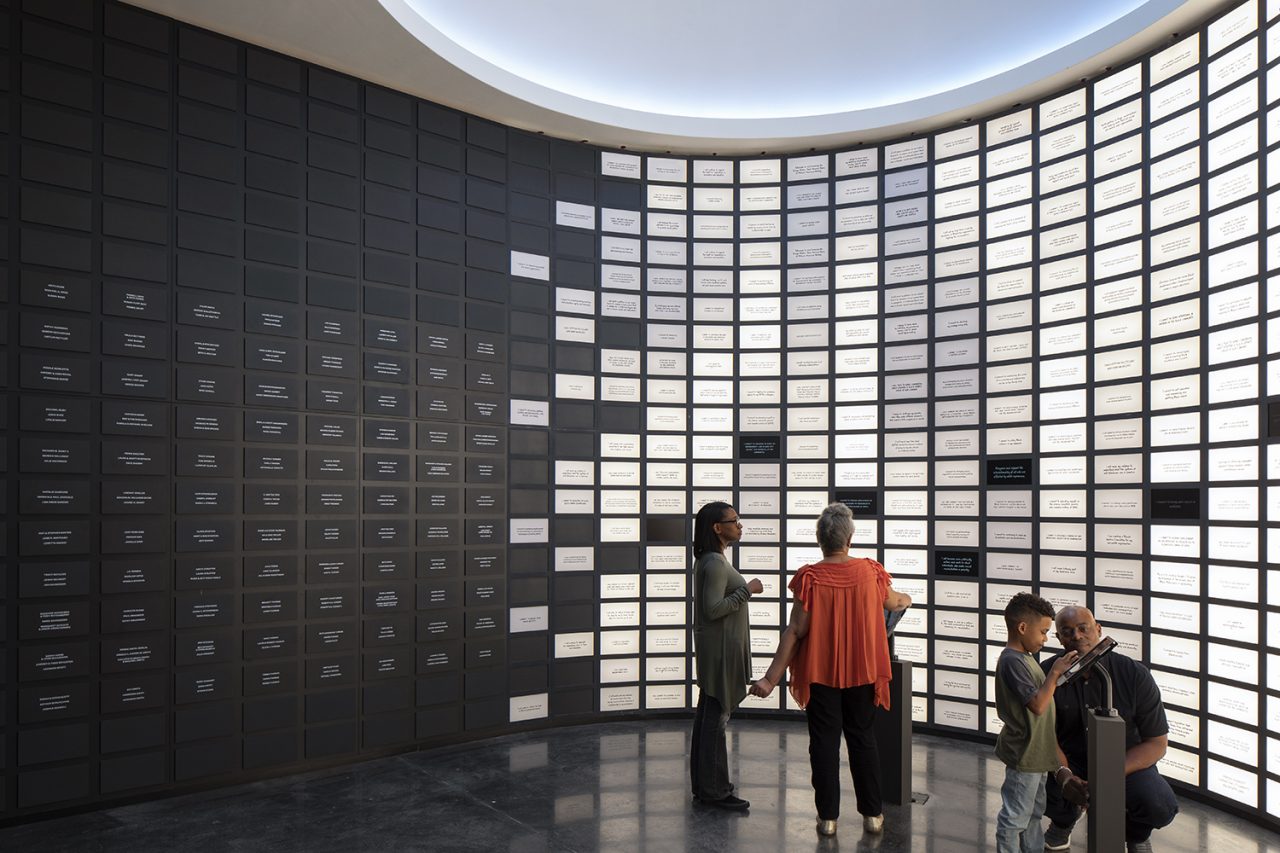
Journey to Reconciliation: Commitment Space
Visitors end their journey by making a personal and actionable commitment toward racial reconciliation. An LED brick activates upon submission, adding visitors’ voices to the community wall of past commitments, which extends into a display of grassroots donor plaques.
Inside Greenwood Rising, blunt, non-academic storytelling relies on first-hand accounts. Visitors move swiftly through the multi-media presentation which regularly challenges guests with frank presentations of America’s, Oklahoma’s and Tulsa’s racial hatred and violence without ever crossing into unnecessary shock effect. Details... are provided to show receipts of racism, but the experience never bogs down in an attempt to be comprehensive.
